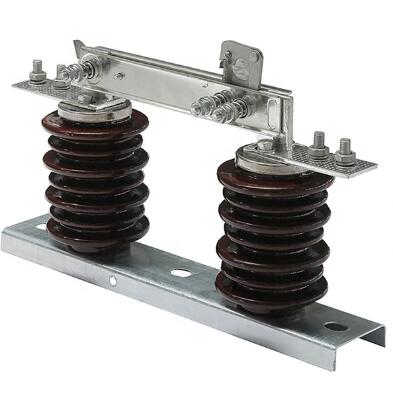Decoding the Anatomy: Key Components of a Single Phase Disconnecting Porcelain Isolate Switch
2023-12-26
Introduction:
In the intricate world of electrical engineering, the reliability and safety of systems often hinge on the effectiveness of individual components. The Single Phase Disconnecting Porcelain Isolate Switch, a critical element in electrical installations, comprises several key components that collectively contribute to its robust functionality. In this blog, we'll unravel the mysteries of this switch by exploring its key components and understanding how each plays a crucial role in ensuring the switch's overall performance.
1. Porcelain Enclosure:
At the core of the Single Phase Disconnecting Porcelain Isolate Switch is its enclosure, typically made from porcelain. This material is chosen for its excellent insulating properties, providing a protective barrier against electrical arcing and ensuring the safety and longevity of the switch. The porcelain enclosure also shields the internal components from environmental factors such as moisture and contaminants.
2. Contacts:
The heart of any disconnect switch lies in its contacts. In the Single Phase Disconnecting Porcelain Isolate Switch, these contacts establish and break the electrical connection. The materials used for the contacts are carefully selected to withstand the electrical load and ensure a reliable and low-resistance connection.
3. Operating Mechanism:
A manual operating mechanism is integrated into the switch to allow users to open or close the contacts as needed. This mechanism is crucial for controlled disconnection and reconnection, facilitating maintenance, repairs, and operational adjustments. The operating mechanism can be a rotating handle, a lever, or a similar device, depending on the switch's design.
4. Insulating Supports:
Insulating supports are strategically placed within the switch to maintain separation between conductive elements. These supports contribute to the switch's insulation coordination, preventing unintended electrical paths and minimizing the risk of faults or short circuits.
5. Arc Chutes:
During the opening of contacts, arcing may occur. Arc chutes are designed to quench and redirect the arc away from the main contacts, reducing wear and tear on the switch and preventing damage that could compromise its functionality over time.
6. Terminals and Connectors:
The switch is equipped with terminals and connectors for easy integration into the electrical system. These components ensure a secure and reliable connection between the switch and the associated electrical components.
7. Handle or Actuator:
The handle or actuator serves as the interface for manual operation. It allows users to engage or disengage the switch, providing a straightforward and efficient means of control.
8. Mechanical Interlocks:
Some Single Phase Disconnecting Porcelain Isolate Switches are equipped with mechanical interlocks to prevent accidental or unauthorized operations. These interlocks enhance safety by ensuring that certain operations can only be performed in a specific sequence.
Conclusion:
The Single Phase Disconnecting Porcelain Isolate Switch is a finely tuned assembly of these key components, each playing a vital role in its overall functionality. The thoughtful integration of materials, mechanisms, and safety features makes this switch an indispensable element in electrical systems, ensuring not only reliable disconnection when needed but also contributing to the overall safety and efficiency of the broader electrical infrastructure. As technology advances, innovations in these components continue to refine the performance and capabilities of disconnect switches, shaping the landscape of modern electrical engineering.



